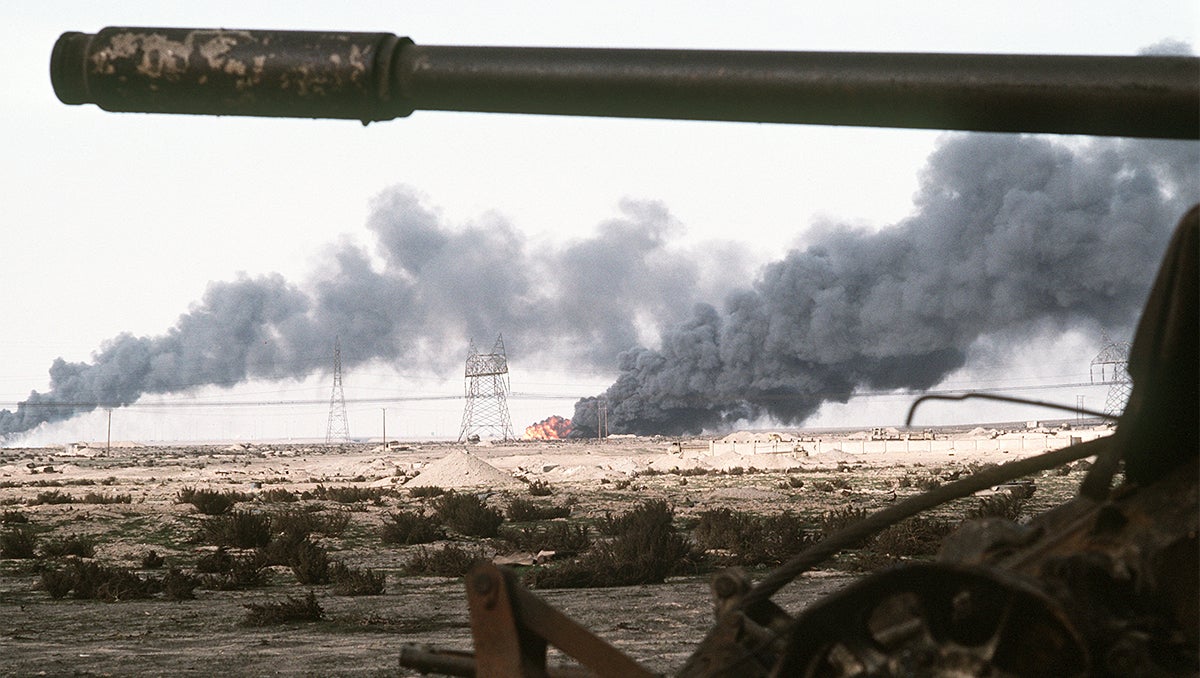Majority of Veterans with GWI Report Moderate/Severe Fatigue, Sleep and Pain Symptoms

Posted in News Release | Tagged Gulf War Illness, School of Medicine
Media Contact
Karen Teber
km463@georgetown.edu
WASHINGTON (February 5, 2020) — An online survey of nearly 500 veterans with Gulf War illness (GWI) suggests a high burden of disease almost three decades after the conflict.
GWI affects 25% to 30% of the 693,826 military personnel who were deployed to the 1990-1991 Persian Gulf War. The diagnosis of GWI — according to the standard “Kansas” criteria — includes a combination of fatigue, sleep, cognitive, pain, respiratory, gastrointestinal and skin problems, among others.
To understand more about symptom severity and disease course, Air Force 2nd Lt. Cayla Fappiano, a medical student at the Georgetown University School of Medicine working with GWI expert James Baraniuk, MD, created an online questionnaire. They published their results in the journal Military Medicine (Feb. 2).
Four hundred eighty-five (485) veterans with GWI responded, grading the current severity of 37 symptoms from “none” (0) to “severe” (4). The median symptom score was 95 out of 148, indicating a high level of morbidity, Fappiano says.
An overwhelming majority of veterans who responded to the survey reported moderate or severe fatigue, sleep and pain symptoms over the past six months: 91% with fatigue, 90% not feeling rested after sleep, 89% with joint pain, 84% having problems falling or staying asleep, and 83% with muscle pain. Additionally, 80% reported moderate to severe cognitive dysfunction with difficulty concentrating and memory concerns.
In addition to logging symptoms, veterans were asked to estimate when each symptom began. About 20% reported fatigue and sleep symptoms in-theater, but more than 40% of this group reported every measured fatigue, sleep, pain, mood and gastrointestinal symptom by 1994.
Baraniuk cautioned that self-reported symptom inventory studies, like this one, are subject to significant bias. Veterans self-selected as having GWI and may have been more likely to participate if they experience more moderate to severe symptoms.
“Further, as the population ages and their prevalence of other medical conditions including cardiovascular disease and cerebrovascular incidents increases, it is important to discriminate these conditions from GWI in future studies,” Fappiano adds.
This study did investigate some co-morbid diagnoses. Chronic fatigue syndrome was present in 89% of those surveyed. Moderate or severe anxiety was present in half. Post-traumatic stress disorder (PTSD) was diagnosed in 19% before 2000, but half reported being diagnosed in the last decade, totaling 66% by 2018. This suggests late onset PTSD may be a component of GWI.
“These symptoms suggest that brain systems related to disordered threat assessment, extreme vigilance, intrusive memories and irritability may be additional components of GWI pathology,” says Baraniuk. “Unfortunately, these symptoms may be misinterpreted as being psychosomatic, which would interfere with the ability of doctors to make the diagnosis of GWI.” In fact, 61% of this group had been told that their condition “is all in their head” by a physician or other health care provider.
“This study not only demonstrates the need to improve the understanding of GWI in the clinic, but also may serve as a model system for following the health of deployed service personnel in future conflicts so that we can make diagnoses and start appropriate treatments earlier,” Fappiano concludes.
The authors report having no personal financial interests related to the study.
The publication of this work was supported by a TD Bank Award to Fappiano.
